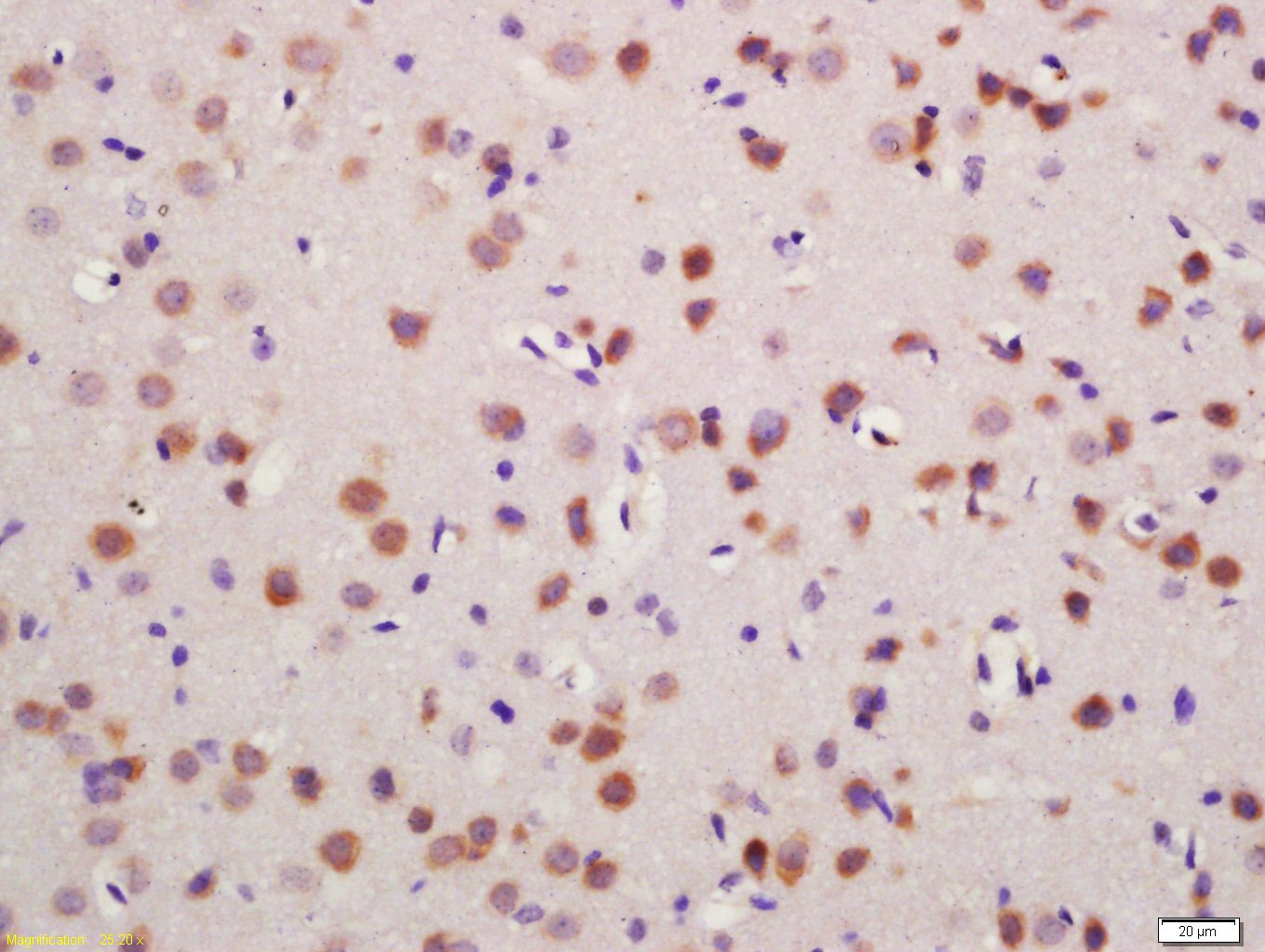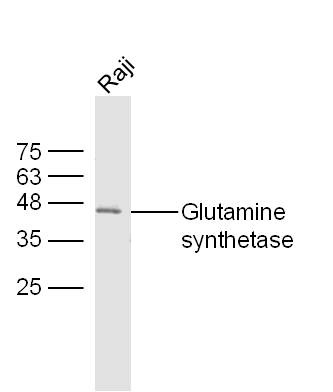Shopping Cart
Remove All Your shopping cart is currently empty
Your shopping cart is currently empty
Anti-GLUL Polyclonal Antibody is a Rabbit antibody targeting GLUL. Anti-GLUL Polyclonal Antibody can be used in ELISA,IF,IHC-Fr,IHC-P,WB.
| Pack Size | Price | USA Warehouse | Global Warehouse | Quantity |
|---|---|---|---|---|
| 50 μL | $221 | 7-10 days | 7-10 days | |
| 100 μL | $374 | 7-10 days | 7-10 days | |
| 200 μL | $529 | 7-10 days | 7-10 days |
| Description | Anti-GLUL Polyclonal Antibody is a Rabbit antibody targeting GLUL. Anti-GLUL Polyclonal Antibody can be used in ELISA,IF,IHC-Fr,IHC-P,WB. |
| Synonyms | GS, Glutamine Synthetase, Glutamate-Ammonia Ligase, Glutamate Decarboxylase, GLUL, GLNS |
| Ig Type | IgG |
| Reactivity | Mouse,Rat (predicted:Human,Pig,Cow,Sheep) |
| Verified Activity | 1. Tissue/cell: mouse brain tissue; 4% Paraformaldehyde-fixed and paraffin-embedded; Antigen retrieval: citrate buffer (0.01M, pH6.0), Boiling bathing for 15 min; Block endogenous peroxidase by 3% Hydrogen peroxide for 30 min; Blocking buffer (normal goat serum) at 37°C for 20 min; Incubation: Anti-Glutamine synthetase Polyclonal Antibody, Unconjugated (TMAB-00780) 1:200, overnight at 4°C, followed by conjugation to the secondary antibody and DAb staining. 2. Sample: Raji Cell (Human) Lysate at 40 μg Primary: Anti-Glutamine synthetase (TMAB-00780) at 1/300 dilution Secondary: IRDye800CW Goat Anti-Rabbit IgG at 1/20000 dilution Predicted band size: 42 kDa Observed band size: 42 kDa   |
| Application | |
| Recommended Dose | WB: 1:500-2000; IHC-P: 1:100-500; IHC-Fr: 1:100-500; IF: 1:100-500; ELISA: 1:5000-10000 |
| Antibody Type | Polyclonal |
| Host Species | Rabbit |
| Subcellular Localization | Cytoplasm. Mitochondrion. |
| Construction | Polyclonal Antibody |
| Purification | Protein A purified |
| Appearance | Liquid |
| Formulation | 0.01M TBS (pH7.4) with 1% BSA, 0.02% Proclin300 and 50% Glycerol. |
| Concentration | 1 mg/mL |
| Research Background | Glutamine Synthetase catalyzes the conversion of ammonia and glutamate to glutamine. It is found in astrocytes as an octamer of identical 42 kDa subunits. The function of Glutamine Synthetase is the detoxification of brain ammonia. It also has an important role in the metabolic regulation of neurotransmitter glutamate. Because of the multiple functions and importance of Glutamine Synthetase in cellular metabolism, both catalytic activities and synthesis are highly regulated. The activity of Glutamine Synthetase is controlled by adenylylation. Its activity is decreased in the cerebral cortex of brains affected by Alzheimer's disease, particularly in the vicinity of senile plaques. It is also decreased under conditions of glucose deprivation. The level of expression of Glutamine Synthetase is increased during ischemia in vivo or hypoxia in culture. |
| Immunogen | KLH conjugated synthetic peptide: human Glutamine synthetase |
| Antigen Species | Human |
| Gene Name | GLUL |
| Gene ID | |
| Protein Name | Glutamine synthetase |
| Uniprot ID | |
| Biology Area | Alzheimer's disease,Glutamate |
| Function | This enzyme has 2 functions: it catalyzes the production of glutamine and 4-aminobutanoate (gamma-aminobutyric acid, GABA), the latter in a pyridoxal phosphate-independent manner (By similarity). Essential for proliferation of fetal skin fibroblasts. |
| Molecular Weight | Theoretical: 42 kDa. |
| Stability & Storage | Store at -20°C or -80°C for 12 months. Avoid repeated freeze-thaw cycles. |
| Transport | Shipping with blue ice. |
| Size | Quantity | Unit Price | Amount | Operation |
|---|

Copyright © 2015-2026 TargetMol Chemicals Inc. All Rights Reserved.